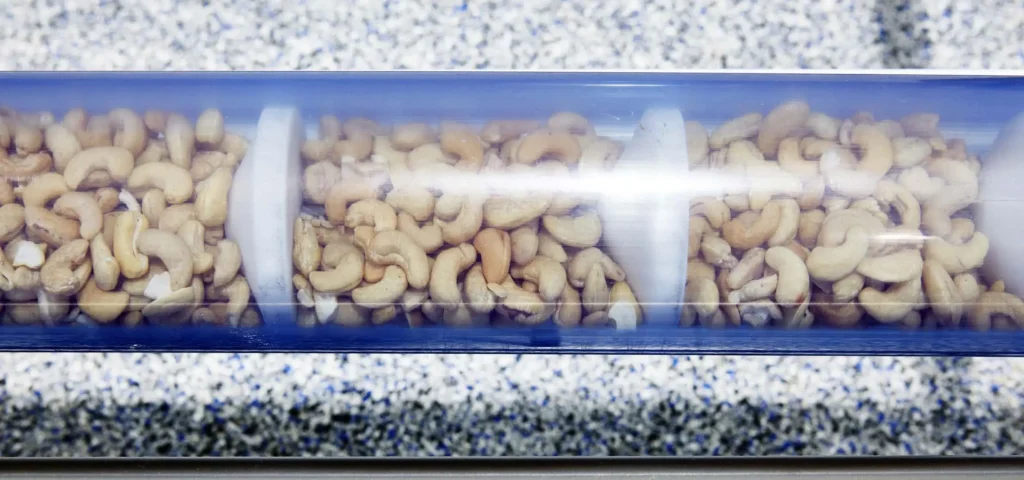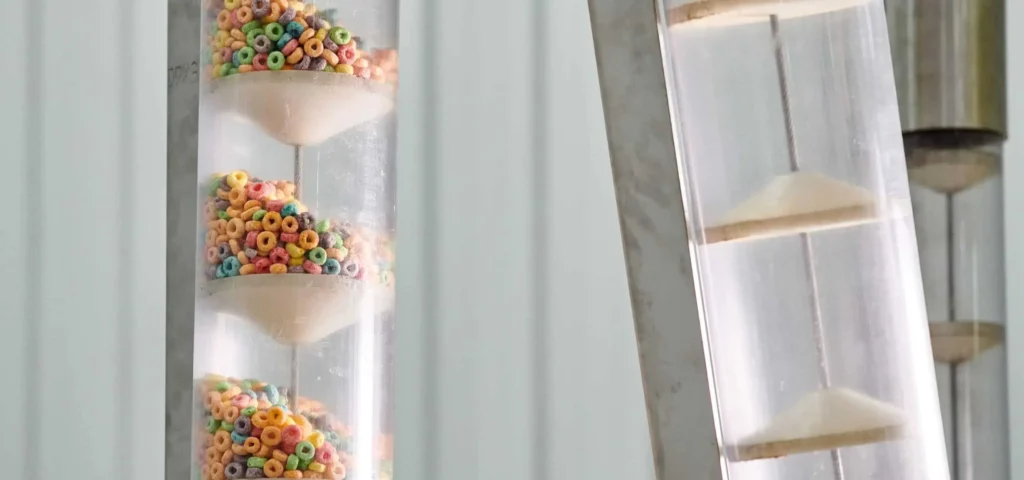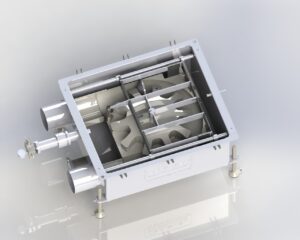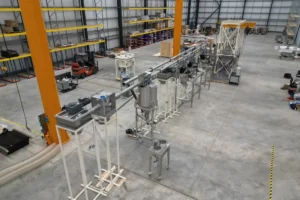When evaluating cost-effective solutions for tubular drag conveyors, chain vs. cable is always a hot topic. Both options boast distinct advantages and limitations that directly impact operational costs. Dive into a detailed analysis that explores factors such as maintenance, efficiency, and lifespan, offering insights to determine the most economical choice tailored to your specific material handling and operational requirements.
Chain vs. Cable – How Do You Choose the Best Option for Your Production Facility?
When it comes to choosing the right conveyor system for your production facility, there are a lot of factors to consider. One critical decision to make is whether to use a chain or cable tubular drag conveyor system. Both have their advantages and disadvantages, but ultimately, the goal is to find the most cost-effective and efficient solution for your business.
Let’s explore the key considerations to keep in mind when deciding between a chain or cable tube drag conveyor. We’ll dive into factors like capacity, layout challenges, durability and maintenance, line changeover, energy consumption, and more so you can make an informed decision that aligns with your production goals and budget.
Capacity and Efficiency of Conveyor Technologies
Both chain and cable drag conveyors have their unique advantages and disadvantages when it comes to capacity and efficiency. Chain conveyors are better suited for heavier and larger materials, and they can handle high volumes of product at fast speeds. They also have a longer lifespan but require more maintenance. They may not be suitable for delicate or fragile products that require gentle handling or lower speed.
Cable Drag Conveyors Are More Energy-Efficient
Cable drag conveyors require minimal maintenance and offer greater precision and control over the conveyed product. They are ideal for smaller or lighter products and can accommodate inclines and turns with ease. In fact, cable drag conveyors have the capacity to move a maximum of 36,200 kg of products per hour while maintaining a low speed and virtually eliminating product degradation. They can be designed to operate at a range of speeds, from slow and gentle conveying for fragile or delicate products to high-speed conveying.

Layout Obstacles in the Production Facility
When it comes to optimizing space in a production facility, the choice between a chain or cable drag conveyor can play a significant role. In cases where there are layout challenges and limited space, chain disc conveyors are often the less favorable option than Cablevey disc conveyors due to their rigid structure and fixed configuration.
Chain Disc Conveyors Come With Limited Layout Options
Unlike Cablevey disc conveyors, which are flexible and can be easily routed around obstacles, chain disc conveyors require a more straightforward path with fewer turns. This means that their layout may be limited to a more linear or L-shaped configuration, which can be challenging for facilities with complex layouts or limited space.
Cablevey’s Disk Conveyors Can Easily Be Adjusted to Fit Your Needs
Cablevey Conveyors produces disk conveyors that offer the added benefit of being modular and scalable, meaning they can be easily expanded or adjusted as needed. They are also able to fit under almost any ceiling height due to their low profile design. This makes them an excellent option for companies that operate in older buildings or smaller facilities, allowing them to make the most of what they have without sacrificing money, efficiency, or safety.
Durability and Maintenance of the Systems
When juxtaposing chain drag conveyors with cable drag conveyors, one must weigh durability and upkeep. Though both conveyor styles are crafted from sturdy materials and aim for user-friendly design, cable drag conveyors typically outshine the maintenance realm.
As highlighted, chain disc conveyors demand frequent upkeep, especially when it comes to modulating chain tension and changing worn sprockets. Wear-induced disruptions or harm to the chain can precipitate challenges, such as the chain dislodging from the sprocket or outright breakage, leading to significant operational halts and high repair expenditures.
Cablevey’s Disk Conveyors Are Easier to Maintain
Owing to their streamlined design and adaptable parts, Cablevey’s disk conveyors present a more straightforward cleaning and maintenance process compared to chain drag conveyors. Being built with a limited number of components, cable drag conveyors lessen the chances of part malfunctions and cut down on regular repair needs. Their pliable belts and easily detachable elements simplify both cleaning and upkeep. Consequently, cable drag conveyors experience reduced maintenance-induced downtime, potentially boosting overall productivity.
Line Changeovers and Downtime
In today’s fast-paced business environment, companies are under increasing pressure to reduce downtime and maximize productivity. This is especially true when it comes to line changeovers in food processing facilities where food safety and material breakage are of utmost importance.
Conventional industrial conveyor mechanisms, like chain drag conveyors, often demand significant time and effort to dismantle and cleanse. All that results in potential wastage, missed production opportunities, and heightened expenses.
In contrast, cable drag conveyors emerge as a more economical and streamlined alternative. Their adaptable architecture and components that can be swiftly detached make disassembly and cleaning a rapid process, cutting down on downtime and mitigating the threat of contaminating the products.

Energy Consumption and Cost-Effectiveness
Tubular cable conveyors have significant advantages over chain conveyors in terms of energy efficiency. The weight of chains makes them heavier – this means they require more energy to operate than cable systems. In fact, tubular chain conveyors often require larger motors and more power than their cable counterparts. While this may seem like a small difference, the long-term cost savings of using a cable conveyor can be significant.
When choosing a conveyor system, it’s important to consider not just the initial cost but also the ongoing expenses like power bills, maintenance costs, and compliance with safety regulations. In this regard, cable drag conveyors are a better option due to their lower energy consumption and overall cost-effectiveness.
Contact Cablevey Conveyors to Learn More About Tubular Drag Conveyors
While both chain and cable drag conveyors have their advantages and disadvantages, cable drag conveyors are often the more efficient solution due to their flexible design, low energy consumption, and minimal maintenance requirements. By carefully weighing all the key factors we mentioned, you can choose the tubular drag conveying system that aligns with your production goals and budget. Contact us at Cablevey Conveyors – we can help you choose the best conveyor solutions for your production facility.
FAQ
What Are the Capacity and Efficiency Differences Between Chain and Cable Drag Conveyors?
Chain conveyors excel in moving larger, heavier materials quickly and have a longer lifespan but require more maintenance. They’re not ideal for delicate items. Cable drag conveyors need less maintenance, offer precise control, and are perfect for lighter, fragile products. They handle layout complexities well and can move up to 36,200 kg of products per hour with low speed, minimizing product degradation.
How Do Chain and Cable Conveyors Compare in Accommodating Layout Obstacles in a Production Facility?
Chain conveyors are less adaptable due to their rigid structure, offering limited layout options. Cablevey disc conveyors are flexible, easily routed around obstacles, and fit under varying ceiling heights. They’re modular and scalable, easily adjusted or expanded to meet changing needs, making them ideal for facilities with complex layouts or limited space.
Which Conveyor Type Is More Durable and Requires Less Maintenance, Chain or Cable?
A cable tubular conveyor is easier to maintain thanks to its simpler design and fewer components. Chain conveyors require frequent adjustments and replacements due to wear and tear. The flexible and easy-to-remove components of cable drag conveyors make cleaning and maintenance straightforward, leading to less downtime and increased productivity.
How Do the Two Conveyor Types Compare in Terms of Line Changeovers and Downtime?
Chain conveyors can be labor-intensive to disassemble and clean, leading to more downtime. Cable drag conveyors, with their flexible design and easily removable components, are quickly disassembled and cleaned. This reduces downtime and the risk of product contamination and is particularly beneficial in food processing facilities where cleanliness and efficiency are paramount.
How Do Chain and Cable Drag Conveyors Compare in Terms of Energy Consumption and Cost-Effectiveness?
Cable drag conveyors are more energy-efficient due to their lighter weight and design, requiring smaller motors and less power. Chain conveyors, being heavier, demand more energy. Considering ongoing expenses like power bills and maintenance, cable drag conveyors offer significant long-term cost savings, making them a more cost-effective option for many businesses.






